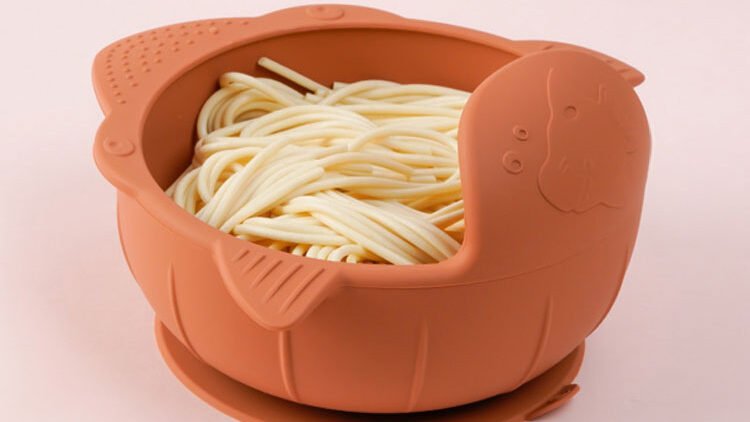Introduction
These days, silicone bowls are very common because of their adaptability, toughness, and non-toxic makeup. These bowls are great for preparing and storing food since they are adaptable and simple to clean. But not all silicone bowls are made alike, and choosing the appropriate supplier may greatly impact the caliber of the item you get. We’ll go deeper into the silicone bowl industry in this post and provide you with all the information you want to pick the finest options for your requirements.

What is a Silicone Bowl
A silicone bowl is kitchenware made of food-grade silicone, which is a synthetic polymer from silica, a component of sand. It is flexible, non-toxic, and resistant to high temperatures.
Benefits of Using Silicone Bowls
Silicone bowls offer several benefits over other types of bowls, including:
- Flexibility
Due to its extreme flexibility, silicone bowls are perfect for preparing and storing food. They are ideal for mixing materials or pouring liquids since they are readily bent and molded.
- Durability
Silicone bowls are durable and resistant to stains and odors, making them ideal for long-term use.
- Non-toxic
Since they are non-toxic and free of dangerous chemicals like BPA and phthalates, silicone bowls are safe for food and perfect for anyone with allergies or sensitivities.
- Easy to clean
Silicone bowls are easy to clean, do not absorb odors or stains, and can be washed by hand or in the dishwasher.
- Versatility
Silicone bowls are versatile and can be used for food prep, storage, and serving.
Manufacturing Process of Silicone Bowls
The manufacturing process of silicone bowls involves several steps, including:
Step 1: Mixing
To manufacture the product, the silicone material is mixed with additives and colorants, then heated and stirred for consistent quality.
Step 2: Molding
Once the mixture is prepared, it is poured into molds and left to cool and harden, creating silicone bowls of various shapes and sizes.
Step 3: Trimming and Finishing
Once the silicone hardens, the bowls are removed from the molds, trimmed, and finished with logos or designs as needed for a smooth surface.
Step 4: Quality Control
Silicone bowls undergo rigorous quality control testing to meet safety and quality standards before packaging and shipment.
Related resources:
Silicone Products Manufacturing Process
Quality Standards for Silicone Bowls
When choosing a silicone bowl manufacturer, it’s essential to look for a manufacturer that adheres to all safety and quality standards. The following are some of the standards that silicone bowls should meet:
- FDA food-grade standards: Silicone bowls should be made from food-grade silicone that meets all FDA safety standards for food contact.
- BPA and phthalate-free: Silicone bowls should be free from harmful chemicals such as BPA and phthalates, which can be harmful to human health.
- Heat resistance: Silicone bowls should be able to withstand high temperatures without melting or releasing harmful chemicals.
- Odor and stain resistance: Silicone bowls should be resistant to odors and stains to ensure they remain hygienic and easy to clean.
Related resources:
Ruiyang Silicone Quality Management
Safety Precautions for Using Silicone Bowls
While silicone bowls are generally safe to use, there are some safety precautions you should take when using them, including:
- Avoid exposing silicone bowls to open flames or direct heat sources.
- Avoid using sharp utensils on silicone bowls, as this can damage the surface.
- Avoid using silicone bowls that have cracks or signs of damage, as this can affect their safety and performance.
- Follow the manufacturer’s instructions for use and care to ensure the longevity of the product.

Things to Consider When Choosing a Silicone Bowl Manufacturer
When choosing a silicone bowl manufacturer, there are several things to consider, including:
- Quality: The manufacturer’s usage of high-quality silicone is critical. Look for a company that utilizes high-quality, food-grade silicone that complies with all safety regulations.
- Process of manufacture: The manufacturing procedure utilized by the producer might also have an influence on the product’s quality. Look for a company that follows a strict production procedure to ensure consistent quality.
- Customer reviews: Customer reviews can give significant insights into the product’s quality and the manufacturer’s customer service. Look for a manufacturer with a high customer satisfaction rating and excellent ratings.
- Price: Price is another key factor to consider. You don’t want to sacrifice quality, but you also don’t want to overspend. Look for a producer who sells high-quality goods at a fair price.
Frequently Asked Questions (FAQs)
Q: Can I use silicone bowls in the microwave?
A: Yes, silicone bowls are generally safe to use in the microwave. However, make sure the manufacturer’s instructions allow for microwave use.
Q: Can I use silicone bowls in the oven?
A: Yes, silicone bowls are safe to use in the oven. However, make sure the manufacturer’s instructions allow for oven use and check the maximum temperature the bowl can withstand.
Q: Are silicone bowls dishwasher-safe?
A: Yes, most silicone bowls are dishwasher-safe. However, check the manufacturer’s instructions before placing them in the dishwasher.
Q: Can I use metal utensils on silicone bowls?
A: It’s best to avoid using metal utensils on silicone bowls, as this can damage the surface. Use silicone, wooden, or plastic utensils instead.
Q: How long do silicone bowls last?
A: Silicone bowls can last for several years with proper care and maintenance.
Conclusion
Silicone bowls are a flexible, long-lasting, and non-toxic food preparation and storage solution. Choose a company that employs safe materials and follows FDA food-grade requirements to ensure you obtain a high-quality product. Proper care and maintenance may extend the life of your silicone bowls. Consider the materials, production method, and quality control procedures when selecting a silicone bowl manufacturer. Silicone bowls may give years of ease with a little research and care.